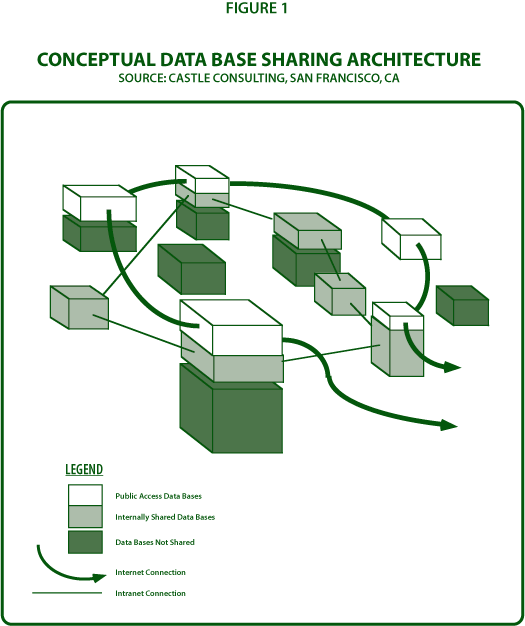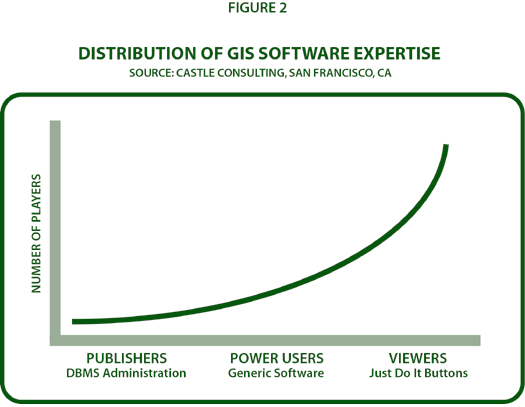
|
"Drink from a Fire Hose" The following text is Gil Castle's final draft of the real estate column appearing in Business Geographics, November 1998 Copyright © 1998 GIS
World, Inc. |
As I've often said before: "Real estate is essentially a game of information arbitrage." All other things being equal, the winner is the person who knows the most. As a corollary, GIS is the best technology for integrating, analyzing, and presenting real estate information.
We are not short of information. Many of my real estate columns over the last several years have delineated the innumerable data bases on the demand for, supply of, and regulation of real estate. The good-news-bad-news is that information arbitrage opportunities abound.
What does the future hold for accessing real estate information?
For the foreseeable future (say, the next five years), I believe that sophisticated real estate players will adopt the architecture shown in Figure 1. Each vertical stack of boxes in the figure represents one workstation:
Note that a given workstation can access to any combination of one, two, or all three of these information sources. In my situation, for example, I use data on my CD drive and information downloaded from the Internet, so my workstation consists of a black box and white box.
Traditionally, of course, business geographics users have relied mostly on Figure 1's black boxes and occasionally gray boxes. That circumstance is quickly changing. The trend is toward downloading only the information one needs, when one needs it—that is, the gray boxes and white boxes. One thereby avoids the numerous hassles of data base updating, integration, and storage.
Some of you are undoubtedly saying: "Oh great, we're already experiencing 'information overload' and apparently it's going to get worse." True, and so we all need ever better ways of panning out the golden nuggets from all the dirt, sand, and gravel.
Figure 2 personifies the problem:
Unfortunately, very few "Just Do It" buttons have yet been programmed. The obstacles include the following: we all want different features and functions in our Viewers, i.e., one size doesn't fit all; relatively few people thoroughly understand both real estate and GIS, and so relatively few people can design and build Viewers that bridge the gap between real estate needs and GIS capabilities; the number of real estate players who are aware of GIS technology has been growing exponentially, but to date the dollars they are willing to spend on the technology has not been growing that fast.
Nonetheless, to coin a phrase, "The future is inevitable." For glimpses of that future of Internet-based GIS Viewers of real estate data, log onto www.brutoninfo.com and www.spbonline.com. You can drink from a fire hose.

